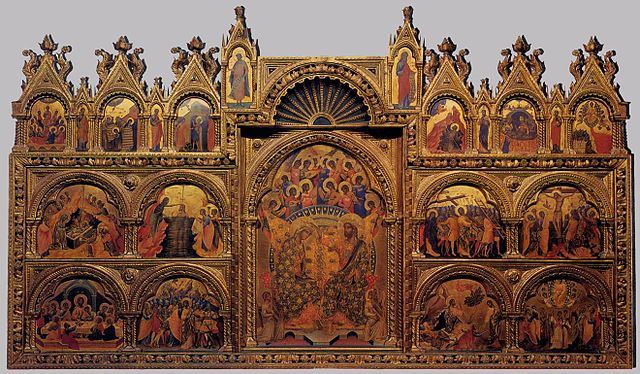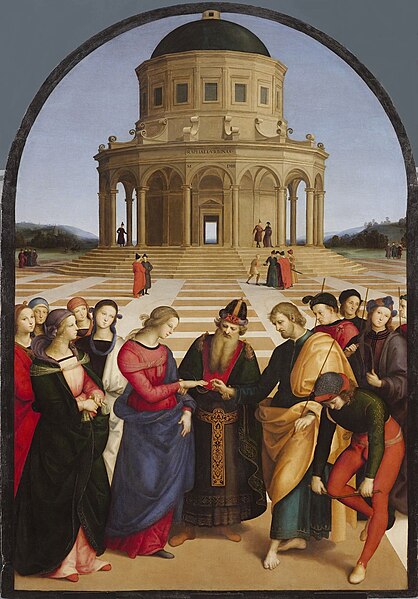Venetian painting was a major force in Italian Renaissance painting and beyond. Beginning with the work of Giovanni Bellini and his brother Gentile Bellini and their workshops, the major artists of the Venetian school included Giorgione, Titian, Tintoretto (1518–1594), Paolo Veronese (1528–1588) and Jacopo Bassano (1510–1592) and his sons. Considered to give primacy to colour over line, the tradition of the Venetian school contrasted with the Mannerism prevalent in the rest of Italy. The Venetian style exerted great influence upon the subsequent development of Western painting.
Titian, Salome with the Head of John the Baptist c. 1515; this religious work also functions as an idealized portrait of a beauty, a Venetian genre developed by Titian, supposedly often using Venetian courtesans as models.
Canaletto, The Entrance to the Grand Canal, c. 1730, a typical veduta
Giovanni Bellini, San Zaccaria Altarpiece, 1505, a late work, San Zaccaria, Venice
Paolo Veneziano, polyptych altarpiece with Coronation of the Virgin, c. 1350
Italian Renaissance painting
Italian Renaissance painting is the painting of the period beginning in the late 13th century and flourishing from the early 15th to late 16th centuries, occurring in the Italian Peninsula, which was at that time divided into many political states, some independent but others controlled by external powers. The painters of Renaissance Italy, although often attached to particular courts and with loyalties to particular towns, nonetheless wandered the length and breadth of Italy, often occupying a diplomatic status and disseminating artistic and philosophical ideas.
Raphael: The Betrothal of the Virgin (1504), Pinacoteca di Brea, Milan.
Sandro Botticelli: The Birth of Venus for the Medici (1484–1485), Uffizi, Florence
Domenico Ghirlandaio, The Birth of the Virgin Mary, shows the introduction of patron's families into religious cycles.
Paolo Uccello, The Battle of San Romano, demonstrates the preoccupation with the development of linear perspective, in a secular subject








